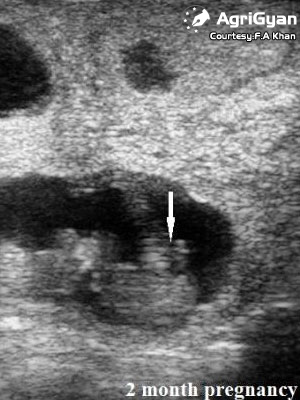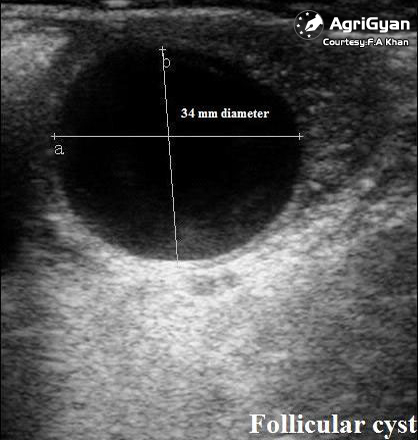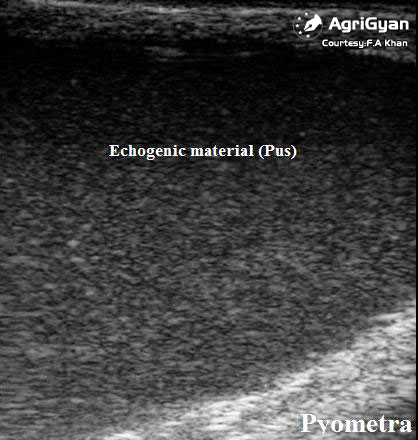Cattle & Buffalo
Ultrasonography is one of the most useful tools for reproductive management in farm animal enterprises. In developed countries, this technique is widely used in routine breeding management especially in dairy farming. In developing countries such as India, its use is still largely limited to research laboratories but it is expected to be incorporated into commercial animal farming in years to come. The recent introduction of portable and more affordable ultrasound machines has made this technique really time and cost effective, thus, making it an attractive option for farmers and veterinary practitioners. Dairy farmers have started to realize the potential of this technique and there is a huge demand for veterinarians who are specialized in reproductive ultrasonography.
Dr. Firdous Ahmad Khan, BVSc, MVSc
Theriogenology Consultant
Positives:
Theriogenology Consultant
Early detection of pregnancy:
Although diagnosis can be made earlier, the usual practice is to perform pregnancy checks at 1 month of pregnancy. Earlier identification of non-pregnant animals allows the farmer to take remedial measures such as re-synchronization and re-breeding thus reducing days open. Animals diagnosed as pregnant at 30 days are usually scanned again at 60 days to identify pregnancy losses between 30 to 60 days.
Although diagnosis can be made earlier, the usual practice is to perform pregnancy checks at 1 month of pregnancy. Earlier identification of non-pregnant animals allows the farmer to take remedial measures such as re-synchronization and re-breeding thus reducing days open. Animals diagnosed as pregnant at 30 days are usually scanned again at 60 days to identify pregnancy losses between 30 to 60 days.
 |

|
Accurate diagnosis of reproductive problems:
Various reproductive disorders such as follicular cysts, luteal cysts, pyometra, hydrometra, delayed ovulation, and anovulation can be diagnosed accurately by ultrasonography. Moreover, the response of several reproductive disorders to various treatment regimens can be monitored using this technique.
 |
 |
Embryo transfer:
Ultrasonography can be used to monitor superovulation response in donor cows and determine the location of corpus luteum (right or left ovary) in recipients. In recent years, ultrasound guided ovum pick-up has been used effectively in different countries for aspirating oocytes for in-vitro embryo production.
Ultrasonography can be used to monitor superovulation response in donor cows and determine the location of corpus luteum (right or left ovary) in recipients. In recent years, ultrasound guided ovum pick-up has been used effectively in different countries for aspirating oocytes for in-vitro embryo production.
Negatives:
The technique doesn’t have any negatives per se. The technique is relatively hazard free for both the operator and the animals.However, in India there are still certain hurdles in its introduction on a large scale.
Big investment for small farmers:
Although the equipment is easily affordable for large farmers, small farmers are reluctant to make such a big investment. Remedy could be joint purchase by several farms that have an association or by a co-operative organization that comprises of several, very small dairy units.
Less availability of trained personnel:
In India, there aren’t many veterinarians with specialized training in reproductive ultrasonography. Although veterinary colleges in our country have incorporated reproductive ultrasonography in their curriculum, teaching is largely limited to theory and there is very little practical training imparted to veterinary graduates. This problem could be solved by organizing training programs for farm staff and veterinarians.
